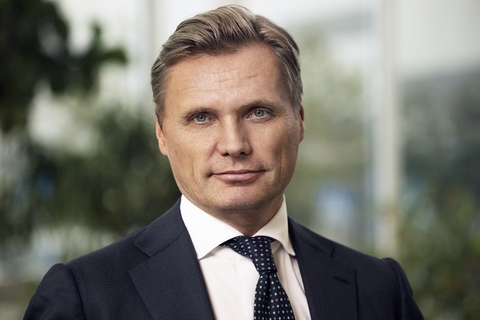LOS ANGELES—Ericsson has been a big believer in the 3GPP standards process and not as gung-ho when it comes to the open source initiatives sweeping over the industry, but that could be changing.

Earlier this year, Ericsson said it was watching the open RAN and open source movement from the sidelines but preferred at that time to work on industry standards through groups like the 3GPP. It wasn’t particularly interested in jumping into the fray of open source projects, of which there are many.
But if you look at open interfaces or open RAN initiatives that customers like AT&T and others are heavily supporting, “we are open to openness,” Fredrik Jejdling, executive vice president and head of Networks at Ericsson, told FierceWirelessTech on the sidelines of Mobile World Congress Americas 2018.
“We believe if that’s the way the industry is going, we need to make sure we can take the lead in that direction as well … Ultimately, if that’s the way the market is going for innovation purposes or whatever reasons there are, we need to make sure that we are there and we need to make sure we can provide the best software and hardware even if it’s a disaggregated model,” he said.
RELATED: Editor’s Corner—Will operators force Ericsson to the Open RAN table?
The O-RAN Alliance started out as an operator-led organization, so the way it’s structured, it would have to invite vendors into the fold, something that’s likely to happen. Internally, Ericsson is considering joining the movement, but “you’ve got to be invited to the party as well,” he noted.
RELATED: xRAN Forum updates methods for delivering RRU, BBU interoperability
It’s been a busy week of U.S.-oriented news for Ericsson. AT&T announced Ericsson is one of its technology suppliers for the operator’s nationwide 5G network, and T-Mobile announced a multiyear, $3.5 billion 5G contract with Ericsson to provide the latest 5G New Radio (NR) hardware and software compliant with 3GPP standards.
In addition, Ericsson, Intel, AT&T and T-Mobile demonstrated non-standalone 5G NR interoperability using 39 GHz spectrum. The demo took place at MWCA and was dubbed the first public 5G NR over-the-air data call using the 39 GHz band.
Ericsson announced last month it will be increasing its investment in the U.S., bringing production closer to its customers here, so the whole process from R&D to general availability of products will shorten the time to market for U.S. customers. “It’s a very important market for us,” Jejdling said.
On a global scale, Ericsson over the last 18 months has recruited almost 3,000 people in R&D in the business arena to serve the fast-moving 5G launches and the type of requirements that are coming from three continents, he said.
